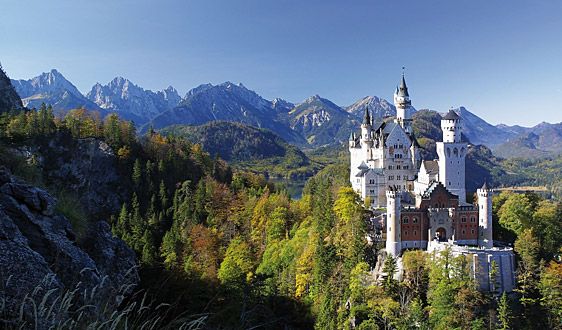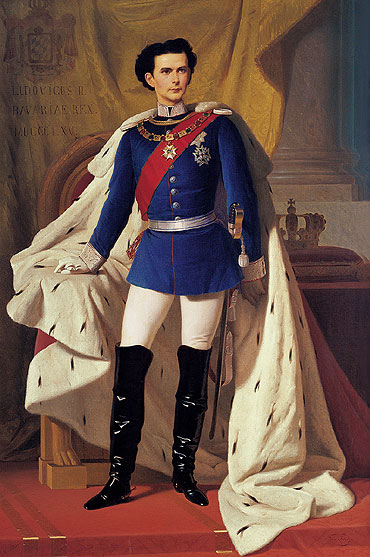When the King is a Queen
As is endorsed, Schloss Neuschwanstein, Germany’s prime tourist attraction perched on a steep rugged rock deep in Bavaria, served as a role model for what was to become the epitome of a castle eligible for the classical Disney story. Its silhouette was even chosen for the logo of the Walt Disney Studios. The elaborate palace is a real estate shrouded in ever-lasting mystery and thus an ideal venue for the incarcerated, bewitched or poisoned princess desperately waiting to be rescued.

Neuschwanstein Castle: The stuff, fairy-tales are made of. Photo courtesy schwangau.de
The speculation may be sobering, if not altogether disturbing: In actual life (with Grimm’s tale swapping gender and location), the courageous, charming prince – hatcheting himself through dense thorny undergrowth determined to kiss awake a Sleeping Beauty napping away the hundredth year of a spell up in the turret next to the poisoned spindle – would have tenderly brought back to life a male member of LGBTI!
Had the Disney version of the real characters inhabiting the elaborate royal housing of Neuschwanstein been authentic: Sleeping Beauty would have had to be a man – Ludwig II., King of Bavaria. Moreover, Neuschwanstein’s talented creator and resident was wide awake and verifiably gay. It is to be assumed that Walt Disney was well aware of that fact when looking for a suitably awe-inspiring venue for his Sleeping Beauty animation. Not unlikely, his choice worked as a silent message only understood by the underprivileged community it had been addressed to. The “fairy-tale king” Ludwig displays a controversial vita, with his same-sex disposition being no secret even in his time. The – equally controversial and no less eccentric – empress of Austria, Elisabeth (Sisi), was a close friend and supporter. The two of them together still make the best fairy-tale fabric Germany and Austria are able to showcase, keeping the relentlessly reeling unhappily-ever-after engine purring.

Undeniably male: Resident of Neuschwanstein Castle, Ludwig II – the Bavarian fairy-tale king.
Ludwig II, proclaimed king at the age of only 18, proved to be an intelligent and extremely inventive character who usually would not waver long before realising projects of outstanding finesse and glamour, no matter the cost. Many an architectural venture of breathtaking grandeur was initiated by him and a series of luxurious castles were built, with Schloss Neuschwanstein twinkling as the brightest jewel in the crown. Epoch-making state-of-the-art equipment is featured in its interior: running water on all floors, central heating fed by hot air, electric communication systems, elevators and a telephone connection, were all rare and exclusive fixtures hard to come by in the 1870s.
An aesthete, Ludwig vividly sponsored the famed German composer Richard Wagner, whose drama-laden and monumental operas, such as Tannhaeuser or Lohengrin, are alive on the murals of Neuschwanstein Castle. Entangled in personal problems and bankrupt after years of harum-scarum overspending, the now often downhearted king increasingly avoided the public. In 1886, 41 year-old Ludwig was declared legally incapable after being diagnosed with incurable paranoia and schizophrenia by government physicians. Shortly after, Ludwig committed suicide by drowning himself in Lake Starnberg – or so goes the legend.
Good to know: The castle the Brothers Grimm had in mind for their real Sleeping Beauty story is the Sababurg (Saba Castle), located near Kassel in the German Federal State of Hessen. The much humbler housing befits the regents of a middle-class kingdom far more than Neuschwanstein’s overly celebrated exuberance ever could. Jacob and Wilhelm Grimm both had died years before Neuschwanstein was built.
Header image: Disneyland Paris, ©Christina Feyerke.
Image of Ludwig II: courtesy of ©Neuschwanstein Castle
